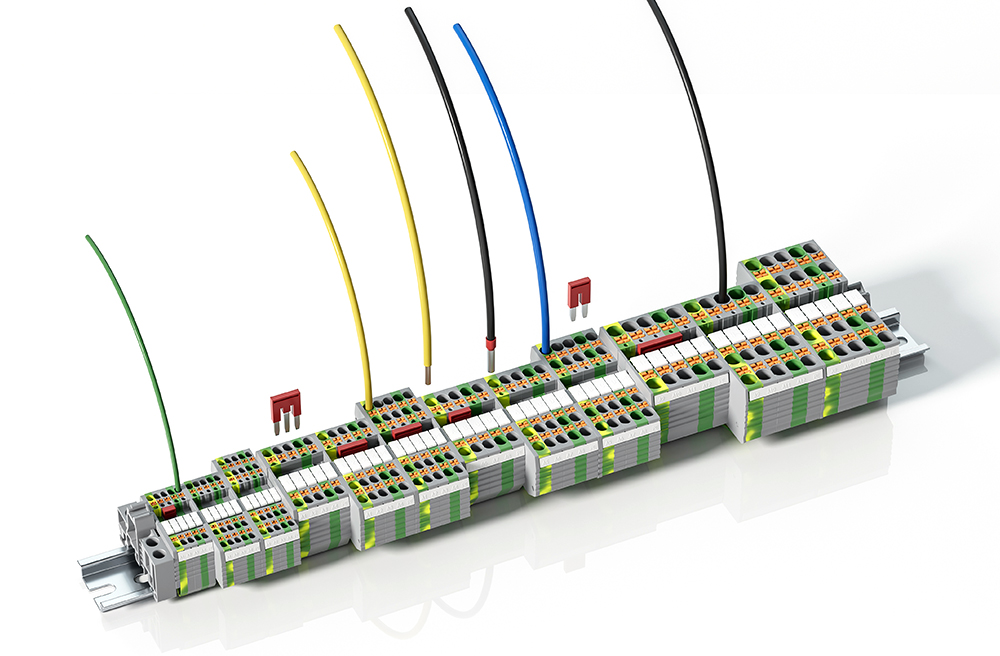- All
- Product Name
- Product Keyword
- Product Model
- Product Summary
- Product Description
- Multi Field Search
Views: 112 Author: Site Editor Publish Time: 2023-10-12 Origin: Site
DIN rail terminal blocks are an important component in electrical systems, used for connecting wires and cables to power and control equipment. However, they can experience common problems that can affect their performance and reliability. Here are some common problems with DIN rail terminal blocks and how to solve them:
Loose connections: Loose connections can occur due to improper installation or use of the wrong size of the wire. Loose connections can lead to heat buildup and eventually result in a fire hazard. To solve this problem, make sure to use the proper size of the wire for the terminal block, and ensure that the wire is properly stripped and inserted into the terminal block. Also, check that the terminal block is properly mounted and secured on the DIN rail.
Corrosion: Corrosion can occur due to exposure to moisture, heat, and chemicals. Corrosion can cause resistance and reduce the performance of the terminal block. To solve this problem, use terminal blocks that are made of corrosion-resistant materials such as stainless steel or brass. Also, avoid installing the terminal blocks in areas with high humidity or chemical exposure.
Overheating: Overheating can occur due to excessive current, loose connections, or a malfunctioning device. Overheating can damage the terminal block and other components of the electrical system. To solve this problem, ensure that the terminal block is properly rated for the current and voltage of the application. Check the connections to ensure they are tight and free of corrosion. If the problem persists, check the devices connected to the terminal block for any malfunctions.

Breaking or cracking: Breaking or cracking can occur due to excessive force or vibration. This can lead to the failure of the terminal block and the electrical system. To solve this problem, use terminal blocks that are made of high-quality materials and are designed to withstand high levels of vibration and force. Also, ensure that the terminal block is properly mounted and secured on the DIN rail.
Improper labeling: Improper labeling can cause confusion and lead to incorrect connections. To solve this problem, ensure that each terminal block is properly labeled with the correct identification, including wire size, voltage rating, and function. This will help prevent errors during installation and maintenance.
Misalignment: Misalignment can occur due to improper installation or damage to the DIN rail. Misalignment can cause problems with the connections and the overall performance of the terminal block. To solve this problem, ensure that the DIN rail is properly mounted and aligned before installing the terminal block. Also, ensure that the terminal block is properly mounted and secured on the DIN rail.
In conclusion, DIN rail terminal blocks can experience common problems that can affect their performance and reliability. By following the above tips, you can solve these problems and ensure the proper operation of your electrical system. Remember to use high-quality terminal blocks, properly install them, and regularly inspect them to prevent any issues from occurring.
A terminal block is a compact, insulated base with metal contacts that lets you clamp, join, and distribute conductors without soldering. If you’ve ever routed power to a drive, brought sensor leads into a controller, or handed off field wiring to a PCB, you’ve used one. Understanding what is a term
As a Engineer ,It is very important to choose globally recognized premium terminal blocks .these manufacturersas below: Phoenix Contact, WAGO, Weidmüller, Eaton, Molex, Amphenol, Harting, and Shanye Electronics (subsidiary of Kefa Electronics). These industry leaders collectively dominate the $4.6
This article covers the technical features of spring-loaded and push-in terminals, and both the advantages and disadvantages of these technologies when it comes to installation practices, commissioning, footprint and authorisation for the North American market. Why do we need spring terminal block ?
Wiring a terminal block correctly is a fundamental skill in electrical work, ensuring safe and reliable connections. This article will help you to understand the essential steps, from preparing your wires to securing them properly within various terminal block types.ContentWhat are Terminal Blocks?R
What is terminal block ?terminal block, also known as a connection terminal, is a modular block used in electrical and electronics systems to connect and secure electrical wires or cables. It serves as a convenient and organized way to make electrical connections, whether for power distribution, sig
Terminal electronics is the key point at which a conductor from a electronic component, device or network comes to an end.Terminal may also refer to an electrical connector at this endpoint, acting as the reusable interface to a conductor and creating a point where external circuits can be connected